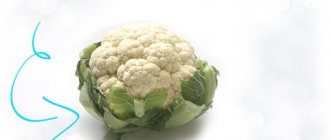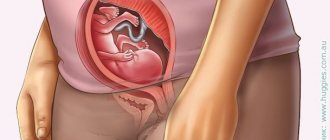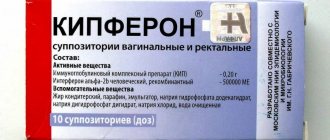Causative agent of intestinal infection
Intestinal infection refers to a set of diseases in which intestinal lesions are observed. The group is large and diverse in etiology. Pathologies differ according to the type of pathogen, but have similar properties. Almost always, an intestinal infection in children is accompanied by a jump in temperature (sharp) and the development of intestinal syndrome. It subsequently leads to dehydration. The sources of disease development are:
- bacteria;
- viral agents;
- mushrooms (much less often);
- parasites;
- prions.
Bacteria are common causative agents of intestinal infections in children. Microorganisms enter the gastrointestinal tract with food and water, tolerate the effects of gastric juice and actively multiply, releasing toxins. Bacteria can be opportunistic, that is, they are normally present in the human body, but in small quantities. The painful condition is caused by a pathogenic intestinal infection; its symptoms and treatment in children are a common problem. The most well-known bacterial pathologies include:
If a virus enters a child’s body, it can cause acute inflammation of the intestinal mucosa. It is easy to become infected: pathogenic organisms are transmitted by oral, household, nutritional (food and liquid) and airborne routes. A person who has entered the body with a pathogen of viral etiology, even after recovery, as a carrier, is capable of infecting others for 2-4 weeks. The following acute intestinal infections in children are distinguished:
- intestinal flu or rotavirus;
- adenoviral;
- rhinovirus;
- enterovirus;
- coronavirus;
- Norfolk group (RNA-containing).
Symptoms of acute intestinal infection
In children, the incubation period of the disease is short, from 30 minutes to several hours. In adolescence, the first manifestations of infection can occur a day after infection (depending on the pathogen, the degree of damage, and the body’s immunity).
Signs of acute intestinal infection in children are the same, regardless of the type of pathogenic microflora. The disease begins acutely. The first symptoms are from the digestive system, then dehydration of the whole body increases in children. The clinic develops against the background of severe intoxication.
The pathological process develops in the intestinal mucosa and leads to functional disorders and morphological changes.
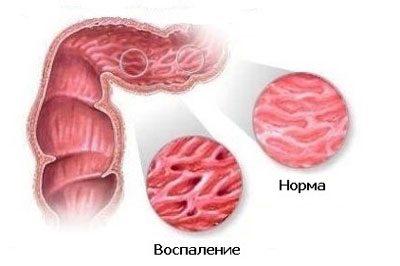
Functional changes:
- failures in the production of enzymes lead to insufficient breakdown of food;
- due to the inflamed mucous membrane, the absorption of nutrients, water, and electrolytes is disrupted;
- impaired motility and peristalsis of all parts of the intestine.
Morphological or structural changes - hyperemia of the mucosa, thinning of the epithelium, formation of ulcers on the walls, death (necrosis) of small areas of the inner membrane.
Intestinal syndrome in children is manifested by the reaction of the digestive organs to an infectious agent:
- from the stomach (gastritis) - nausea, single or repeated vomiting that does not bring relief, heaviness in the epigastric region, the appearance of a gag reflex when trying to take water or food, in infants immediate regurgitation after taking breast milk or infant formula;
- from the small intestine (enteritis) - bloating, pain of varying intensity in the navel area when pressing on the abdominal wall, rumbling in the intestines;
- from the large intestine - profuse diarrhea, loose stools, containing impurities, pain during bowel movements, pain around the perimeter of the abdomen, radiating to the rectum, spasms, false urge to defecate.
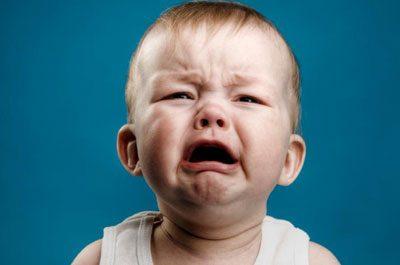
Lack of water leads to inhibition of the kidneys, liver, and brain. The quantitative and qualitative composition of the blood changes rapidly, which leads to disruption of intracellular metabolism. Lack of fluid contributes to an increase in the concentration of toxic substances in the body, and intoxication poisoning can cause death. How to recognize signs of dehydration in young children:
- dry mucous membrane of the mouth and nose, dry lips, swallowing movements are pronounced due to insufficient saliva production, the tongue protrudes outward;
- viscous saliva;
- lack of tear fluid - the child cries without tears;
- due to impaired kidney function, urination less than once every 2 hours;
- vomiting, diarrhea, sweating are signs of dehydration;
- dry skin that folds on its own.
Toxins produced by bacteria quickly enter the bloodstream and spread throughout the child’s body. The presence of toxic substances in the blood leads to an increase in body temperature, causing pain and aching in the muscles and bones. Babies may experience convulsive contractions in the limbs. Due to increased muscle tone, the head is thrown back, the eyelids do not close well. An important symptom of intoxication is a change in skin color. The integument becomes pale, with a blue tint, and cold to the touch. Spots may appear on the skin.
Failure of the kidneys provokes an increase in acetone in the blood. This affects the vomiting center in the brain and causes vomiting that is not associated with damage to the gastrointestinal tract. In severe cases, large nerves and trunks are affected - neurotoxicosis. This condition is characterized by impaired consciousness, even loss of consciousness, severe headaches, impaired motor activity, and acute sensitivity to sounds and light.
How is intestinal infection transmitted?

Knowing how the infection is transmitted from person to person can help prevent infection. Routes of transmission of OCI include: water, food, dirty hands, soil, insects (especially flies), air and surface waters of reservoirs. A bacterial infection enters the intestines after eating undercooked food or dirty water, as well as due to poor hygiene. NCI of a viral nature is transmitted through household contact and airborne droplets:
- The most common rotavirus intestinal infection in children is the microorganisms of which are resistant to the environment. The main source of infection is a sick person who excretes a large number of viral particles in feces.
- The source of adenovirus infection is considered to be a sick person and a virus carrier.
- Rhinovirus is transmitted only from its carrier, which can be not only a person, but also an animal.
- The greatest danger with enterovirus is the infected person himself. The fecal-oral route comes first.
- Coronavirus is transmitted by airborne droplets. Close contact is 50% of infection.
Signs of intestinal infection in a child
The disease can be recognized by intoxication of the body, temperature, headaches, mucous discharge with pus and blood. There are types of intestinal infections:
- Viral – mild symptoms. Characterized by headache, fever, weakness, mild diarrhea (without blood, mucus, pus).
- Intestinal – the infection is more complicated. Characterized by vomiting, pain in the center of the abdomen, diarrhea (with mucus, pus, blood), poor health, and loss of fluid. If there is an infection, the child will be weak and lethargic.
More often, a baby becomes infected through water, food, unwashed hands, dirty toys, and contact with children. A child with a weak immune system is susceptible to infection. The disease manifests itself in summer and autumn, when there are many factors for infection. Parents should protect the child, carefully monitor his actions so that he does not put dirty hands in his mouth, and before eating, wash his hands and the food he is going to eat.
Intestinal infection in children - symptoms
The incubation period of ACI is short and ranges from 1 to 7 days, depending on the nature of the disease. After this, an intestinal infection suddenly manifests itself; symptoms and treatment in children cannot be ignored. Symptoms can be different, appear singly or in combinations, and have varying degrees of severity. The main signs of an intestinal infection in a child:
- nausea and vomiting;
- flatulence;
- stomach ache;
- loose stools;
- heat.
Depending on the type of infection, symptoms such as:
- fever and convulsions (with dysentery);
- adynamia, weakness (salmonellosis);
- rhinitis and sore throat (rotavirus);
- severe toxicosis (staphylococcus).
The main differences between childhood intestinal infections for parents
The clinic can distinguish childhood intestinal infections. The main features of each of them are as follows:
- shigella (dysentery),
- asymptomatic period 2 – 3 days,
- loss of appetite, headache, lethargy, fever, convulsions,
- There is no vomiting, dehydration is not typical,
- pain in the left side of the abdomen, false urge to bowel movement.
Read more about shigellosis here .
- salmonella (salmonellosis),
- incubation (without symptoms) – from one hour to a day,
- acute onset with a rise in temperature (up to 38.5 - 39 degrees),
- abdominal pain and vomiting,
- diarrhea up to 5 times a day, starting from the second day of illness,
- group foci of pathology (kindergarten group, school class).
- amoebas (intestinal amoebiasis or amoebic dysentery),
- asymptomatic course from 1 week to 3 months,
- intoxication is mild, body temperature is normal, or rises to 37.2 - 37.5 degrees,
- sometimes short-term abdominal pain, flatulence,
- fatigue, weakness,
- bowel disorders (diarrhea).
- rotavirus,
- asymptomatic period from 1 to 4 days,
- diarrhea 3 – 6 days
- vomiting before or along with diarrhea,
- elevated body temperature from the 1st day of illness, up to 39 degrees.
- Escherichia,
- There are four forms of pathology depending on the form, the onset can be acute or gradual,
- acute form of the disease up to 7 days (average 3 – 4 days),
- pronounced flatulence,
- cramping pain in the abdomen that is not expressed with the act of defecation.
- Yersinia (intestinal yersiniosis).
- asymptomatic course from 3 to 20 days,
- pain in the right lower-lateral abdomen,
- rash around the joints, on the hands in the form of gloves, on the legs in the form of socks,
- joint pain,
- enlarged lymph nodes (cervical, inguinal),
- sore throat.
If the infection is caused by staphylococci or other bacteria, the color of the stool will be close to yellow. What to do if your child has diarrhea, read this article.
Other differences between acute intestinal infections in children based on the nature of stool
| Pathology | Shigellosis | Salmonellosis | Yersiniosis | Intestinal amoebiasis | Rotavirus | Escherichia | ||||||
| Frequency per day | Depending on the severity (from 2 to 15 times) | 3 – 5 times | Up to 7 times a day | From 4 – 6 at the beginning to 20 times | Up to 5 times a day | ET: 15 – 20 times | EP: 10-15 times | EG: 5 – 7 times | EI: 3 – 5 times | |||
| Type of feces | With a lot of mucus, a foul odor, sometimes streaked with blood and rectal spitting (blood at the end of a bowel movement) | Dark green, liquid, reminiscent of swamp mud | Liquid stool, without any peculiarities | Watery, then glassy, then mixed with blood, like raspberry jelly | Watery, without strong foul odor | Watery, similar to rice water | With food particles, turns watery, foamy, yellow or orange | Watery with blood | ||||
Note: Escherichiosis can be enterotoxigenic (ET), enteropathogenic (EP), enteroinvasive (EI), enterohemorrhagic (EG).
Read more about diarrhea in children here.
Intestinal infection in children - treatment
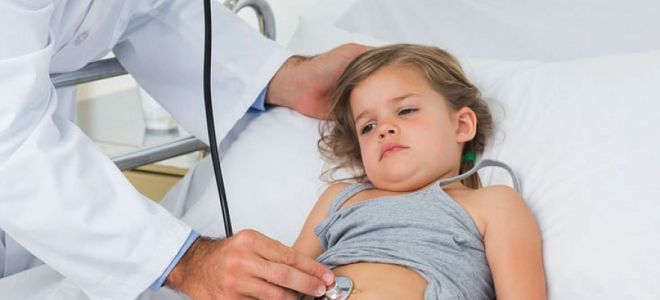
Before treating an intestinal infection in children, it is necessary to identify the nature of the disease. This can only be done by a pediatrician or other specialist doctor. It is important to exclude appendicitis, pancreatitis and other serious pathologies from the list of possible diseases. Once the diagnosis is made, adequate therapy is prescribed. It must be comprehensive, that is, include the organization of therapeutic nutrition, elimination of symptoms of the disease and its causes, fluid replenishment and other measures.
Causes of infection in children
Susceptibility to infection varies and depends on several factors - age, immunity, social status and quality of life. An acute intestinal infection in a child develops when bacteria enter through the mouth. For infection to occur, a certain number of pathogenic microbes must enter the body. When a foreign body is introduced, the child’s immune system activates a protective function; the bacteria die under the influence of saliva, gastric juice, and immunoglobulins in the intestines. Children under 5 years of age are more susceptible to infection, since their body’s defenses have not yet been formed.
Diet for intestinal infections in children - menu
Treatment cannot be considered complete without following a special diet. It is necessary to restore the body, replenish fluid reserves and nutrients. What to feed a child with an intestinal infection? Food should be easily digestible, varied, and rich in protein. It is preferable to steam it and serve the dish in the form of purees or soups. Portions are reduced, but the number of meals is increased. The diet for intestinal infections in children includes a list of the following products and dishes:
- gluten-free porridges (rice, buckwheat, corn);
- vegetable broths and puree soups;
- pumpkin and zucchini;
- lean meat (chicken, turkey, veal);
- crackers;
- egg white omelet;
- low-fat cottage cheese (as you feel better).

After the acute period has passed (vomiting and nausea have stopped, stool has returned to normal), it is necessary to prepare a full menu for the child, especially if there has been an intestinal infection in children under one year of age.
Menu for this period:
- Breakfast – milk porridge, low-fat cottage cheese or cottage cheese casserole, omelet.
- Lunch - vegetable soups, boiled rice or vegetables, fish or lean meats.
- Dinner – egg, bun, kefir.
- As a snack – jelly, cookies.
Acute intestinal infections in children - prevention
Children are at risk for contracting acute respiratory infections, and they are especially vulnerable in the summer. Therefore, parents should promptly prevent intestinal infections in children. It includes: basic compliance with sanitary and hygienic standards, choosing safe products and preparing them correctly, using clean water, both for drinking and cooking. It is recommended to always have wet wipes and a supply of liquid for washing your hands and products with you. To prevent an intestinal infection from subsequently developing, prevention must be carried out constantly.
In the summer, intestinal infections become more and more common; symptoms and treatment in children arouse increased interest among parents. If, by all indications, the baby has caught a virus or has been attacked by bacteria that caused an intestinal disorder, immediate action must be taken. Especially if the child is small and the symptoms are severe. Therapy is recommended to be carried out under the supervision of a physician.
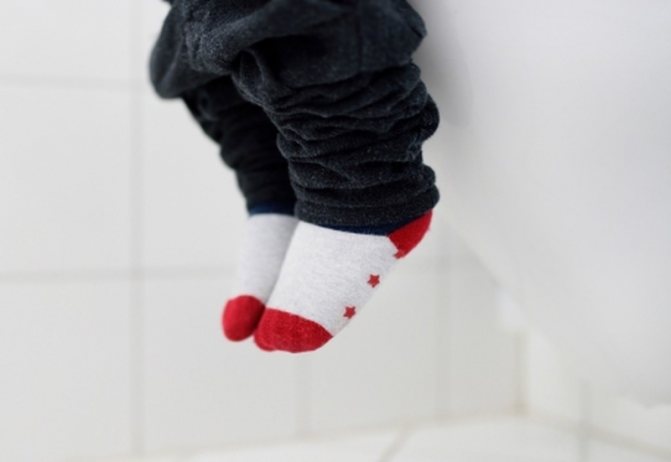
Prevention of acute intestinal infections
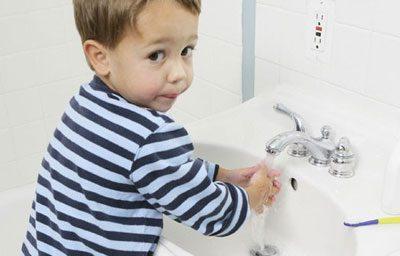
Prevention of acute intestinal infections includes the following measures:
- compliance with sanitary and hygienic standards by both the child and parents;
- compliance with technological rules for food processing and cooking;
- proper sale and storage of food products.
Methodological recommendations for preventing the spread of the source of infection - identifying the disease in the early stages, isolating a child with an intestinal infection, hospitalization. If epidemiologically necessary, provide the patient with a separate box (special ward).
In order to prevent and prevent relapse after discharge, the child should be actively observed in the clinic (dispensary examination) for the first month.
Treatment of acute intestinal infection in children, even if the child’s health is satisfactory, should not be carried out at home. Lack of professional monitoring by doctors over health status can lead to negative consequences.
Intestinal infections in children: situations when a child needs a doctor
Intestinal infections (like any other) in children can be either viral or bacterial - the difference, as the names indicate, is in the nature of the pathogen. Among viral intestinal infections in children, the most common is rotavirus.
In addition to rotavirus, the most common intestinal infections in children include:
However, do not be afraid or despair! Pediatricians say that more than 90% of all cases of intestinal infections in children can be overcome without the use of any special medications, at home, just by observing measures against dehydration of the child’s body.
However, there remains an insidious and terrible 10% of intestinal infections in children - these are those cases of the disease when there can be no talk of any self-medication. When the main task of the parents and relatives of the baby is to deliver the child to the hospital to infectious disease professionals as quickly as possible.
How does intestinal infection occur?
Infection occurs when a pathogenic virus or bacteria enters the child’s body, namely, its gastrointestinal tract. Infection with intestinal infections in children is influenced by three most important factors:
- Human carriers (that is, you can become infected from a sick person, for example, through a kiss or by sharing an apple with him);
Food (you can catch a pathogenic virus or bacteria by eating a low-quality or stale product);
Water quality (this is the most common and widespread way of spreading intestinal infections - through contaminated water).
Features of the treatment of intestinal infections in children
Prevention of dehydration. Only a small number of intestinal infections in children are treated with antibiotics. Most go away on their own, under the pressure of the child’s immune system, which after a few days develops the necessary protection against the disease. The task of the child’s body is to survive these few days. And the most dangerous risk for a child at this time is not the activity of harmful microbes or bacteria, but banal dehydration.
We will tell you below and in as much detail as possible how and what to give a child to drink during an intestinal infection.
Fighting high fever. We are accustomed to thinking that there is no need to bring down a child’s elevated body temperature, for example, during ARVI, if it has not exceeded 38° C. However, in the case of intestinal infections in children, it is not only possible, but also necessary to bring down the elevated temperature. Mainly precisely because fever provokes significant fluid loss from the body, and dehydration is especially dangerous during intestinal infections in children.
Remember: the higher the baby’s body temperature during an intestinal infection, the more intensively he needs to be fed!
Treatment of intestinal infections in children with antibiotics. We have already mentioned that only a small percentage of intestinal infections require the use of antimicrobial agents in treatment. Moreover, the use of antibiotics for intestinal infections is strictly regulated by WHO.
So, the indications for the use of antibiotics for intestinal infections in children, approved by the World Health Organization:
- 1 Hemocolitis (in other words, an admixture of blood in stool or vomit);
- 2 Severe forms of cholera.
- 3 Prolonged diarrhea (which lasts for several days in a row) when diagnosed with giardiasis - a disease caused by parasites in the small intestine.
Only in these three cases is the use of antibiotics for an intestinal infection in a child justified and effective. In all other cases, antimicrobial therapy is practically meaningless and unfounded.
Alas, the WHO does not have any instructions regarding the use of sorbents for intestinal infections in children (since there is no direct evidence yet of the advisability of using such drugs). However, many practicing pediatricians believe that the use of sorbents actually helps to some extent protect the child’s body from dehydration and intoxication due to intestinal infections. There is no consensus yet, but in any case, no one has yet been able to prove that the use of sorbents is clearly harmful to the body.
Intestinal infection in children: how to recognize infection and how to properly treat the disease
Intestinal infections (like any other) in children can be either viral or bacterial - the difference, as the names indicate, is in the nature of the pathogen.
Among viral intestinal infections in children, the most common is rotavirus. In addition to rotavirus, the most common intestinal infections in children include:
- Salmonellosis
- Enterovirus
- Dysentery
According to WHO statistics, about 2 million children under the age of 5 die from intestinal infections every year worldwide.
However, do not be afraid or despair! Pediatricians say that more than 90% of all cases of intestinal infections in children can be overcome without the use of any special medications, at home, just by observing measures against dehydration of the child’s body.
However, there remains an insidious and terrible 10% of intestinal infections in children - these are those cases of the disease when there can be no talk of any self-medication. When the main task of the parents and relatives of the baby is to deliver the child to the hospital to infectious disease professionals as quickly as possible.
So, if you suspect an intestinal infection, the child immediately needs urgent medical attention if:
- It is impossible to give him something to drink (the child either cannot swallow the water or immediately regurgitates it back);
- Blood clots are found in stool or vomit;
- There are clear signs of dehydration, which include:
- dry skin and mucous membranes;
- so-called “dry” tongue;
- lack of tears and sweat;
- lack of urination (never peed in the last 5-6 hours).
- Diarrhea or vomiting has the following associated symptoms:
- the child is very chilly;
- his skin is pale in color;
- or a rash appears on the child’s skin;
- there is a sharp and strong increase in body temperature;
- The baby complains of a severe headache.
Signs and symptoms of intestinal infection in children
The above signs and symptoms describe situations when a particular intestinal infection becomes severe or even fatal. But, fortunately, such situations do not arise often. In most cases, infection with an intestinal infection is usually expressed by a number of universal symptoms:
- Slight increase in body temperature;
- Lethargy, pallor, drowsiness;
- Refusal to eat;
- Diarrhea (diarrhea);
- Vomit.
Alas, most parents immediately associate infection with one or another intestinal infection exclusively with diarrhea - they say, since my child has diarrhea, then he probably “caught” at least dysentery. In fact, any intestinal infection always has several symptoms (and not just one), among which diarrhea is far from the most important and not the very first.
How does intestinal infection occur?
Infection occurs when a pathogenic virus or bacteria enters the child’s body, namely, its gastrointestinal tract. Infection with intestinal infections in children is influenced by three most important factors:
- Human carriers (that is, you can become infected from a sick person, for example, through a kiss or by sharing an apple with him);
- Food (you can catch a pathogenic virus or bacteria by eating a low-quality or stale product);
- Water quality (this is the most common and widespread way of spreading intestinal infections - through contaminated water).
Features of the treatment of intestinal infections in children
Prevention of dehydration. Only a small number of intestinal infections in children are treated with antibiotics.
Most go away on their own, under the pressure of the child’s immune system, which after a few days develops the necessary protection against the disease. The task of the child’s body is to survive these few days.
And the most dangerous risk for a child at this time is not the activity of harmful microbes or bacteria, but banal dehydration.
If parents know exactly how to protect their child’s body from dehydration, their baby will not be afraid of almost any intestinal infection.
We will tell you below and in as much detail as possible how and what to give a child to drink during an intestinal infection.
Fighting high fever. We are accustomed to thinking that there is no need to bring down a child’s elevated body temperature, for example, during ARVI, if it has not exceeded 38°C.
However, in the case of intestinal infections in children, reducing fever is not only possible, but also necessary.
Mainly precisely because fever provokes significant fluid loss from the body, and dehydration is especially dangerous during intestinal infections in children.
If a child has an intestinal infection accompanied by an increase in body temperature, he needs to be given an antipyretic drug to avoid dehydration and intoxication of the body. But besides this, it is extremely important to constantly water the child.
Remember: the higher the baby’s body temperature during an intestinal infection, the more intensively he needs to be fed!
Treatment of intestinal infections in children with antibiotics. We have already mentioned that only a small percentage of intestinal infections require the use of antimicrobial agents in treatment. Moreover, the use of antibiotics for intestinal infections is strictly regulated by WHO.
So, the indications for the use of antibiotics for intestinal infections in children, approved by the World Health Organization:
- Hemocolitis (in other words, an admixture of blood in stool or vomit);
- Severe forms of cholera.
- Prolonged diarrhea (which lasts for several days in a row) when diagnosed with giardiasis is a disease caused by parasites in the small intestine.
Only in these three cases is the use of antibiotics for an intestinal infection in a child justified and effective. In all other cases, antimicrobial therapy is practically meaningless and unfounded.
Treatment of intestinal infections in children using sorbents.
There is some reason for the use of sorbents (special medications that can selectively absorb most poisons, toxins and other harmful substances inside the gastrointestinal tract) for intestinal infections - they really, thanks to their absorption ability, can rid the body of an excess of toxins, gases and other “harmful substances” .
Alas, the WHO does not have any instructions regarding the use of sorbents for intestinal infections in children (since there is no direct evidence yet of the advisability of using such drugs).
However, many practicing pediatricians believe that the use of sorbents actually helps to some extent protect the child’s body from dehydration and intoxication due to intestinal infections.
There is no consensus yet, but in any case, no one has yet been able to prove that the use of sorbents is clearly harmful to the body.
Well-known pediatrician, Dr. E. O. Komarovsky: “The use of sorbents for intestinal infections in children is definitely moderately effective”
How and what to feed a child during vomiting and diarrhea due to intestinal infections
The best drugs for quickly replenishing the physiological norms of body fluids are oral rehydration products. These include drugs such as: Regidron, Humana Electrolyte, Orasan, Gastrolit, Maratonic and others.
These drugs are effective against any dehydration and are useful for any infections, not only intestinal ones. But there is a nuance!
If, for example, during ARVI, a child loses fluid from a fever and at the same time flatly refuses to drink a salty (to tell the truth, frankly tasteless) solution, you may well offer him a much more tasty tea, compote or fruit drink as a replacement.
However, with intestinal infections, this “trick” will not work: in order to restore the vital water-salt balance of the child’s body, he will have to replenish fluid losses with the help of saline solutions. Because it is the loss of salts during intestinal infections that is especially large and most dangerous.
If for some reason you cannot buy pharmaceutical products for oral rehydration, then in extreme cases you can prepare a similar solution yourself (the recipe is recommended by WHO). To do this you will need:
- 1 liter of water
- 2 tbsp. spoons of sugar
- 1 teaspoon table salt
- 1 teaspoon baking soda
All ingredients must be thoroughly mixed - and the solution is ready for use.
But before giving it to the child, it is necessary to heat the solution to the child’s body temperature (that is, if the baby’s body temperature is 36.6 ° C, the solution must also be heated to 36.6 ° C, and if the child has 38 ° C, then the solution should be heated to 38° C).
What is it for? It's simple - the rate of absorption of liquid into the blood becomes maximum only when the temperature of the liquid is compared with body temperature.
Dr. Komarovsky: “If you manage to effectively and timely replenish fluid loss in a child during an intestinal infection, then with a 90% probability it will go away on its own in 4-5 days, without any drug therapy.”
How and what to feed a child with an intestinal infection
It is quite obvious that almost any food against the background of any intestinal infection (and especially meat products, dairy products, etc.) significantly worsens the course of the disease. This is due to the fact that during the course of an intestinal infection (and for some time after recovery), the enzymatic activity in the child’s gastrointestinal tract is sharply reduced.
Therefore, theoretically, ideally, a child with an intestinal infection, in the name of a speedy recovery, should be “put” on a 1-2-day fast, or at least on a strict diet with a lot of restrictions.
Meanwhile, not all children, and even more so, not all parents are ready (not only morally, but also physically!) to withstand such “therapeutic fasting.”
In this regard, WHO recommendations insist that a child during an intestinal infection can be fed almost exactly the same as before the infection.
And this is especially true for children with low body weight - it is generally catastrophically dangerous for them to starve or “fast” during an intestinal infection.
However, if your child has a normal body weight, then during illness it is very useful to switch him to a liquid vegetarian diet (that is, the diet should consist mainly of liquid meals based on cereals and vegetables).
How to feed your baby immediately after an intestinal infection
Let us remind you: during most intestinal infections, a child experiences temporary enzymatic deficiency - that is, the activity of enzymes is significantly reduced for some time. But more than that, this deficiency persists for some time after the illness. This is extremely important to take into account when creating a menu for a recovering child.
The situation often goes like this: the baby recovers from an intestinal infection, his condition improves and his appetite awakens. And so the parents (and especially the grandmothers) joyfully put food on the table, as in that famous film - “fatter and thicker.”
But physiologically, the child’s body is not yet ready for such feasts - he simply does not have the enzymes to digest such a meal.
And so the under-digested food enters the intestines, where it begins to ferment and rot, becoming a new reason for the child’s stomach pain.
Source: https://www.woman.ru/kids/healthy/article/150903/
How and what to feed a child during vomiting and diarrhea due to intestinal infections
The best drugs for quickly replenishing the physiological norms of body fluids are oral rehydration products. These include drugs such as: Regidron, Humana Electrolyte, Orasan, Gastrolit, Maratonic and others.
If, for example, during ARVI, a child loses fluid from a fever and at the same time flatly refuses to drink a salty (to tell the truth, frankly tasteless) solution, you may well offer him a much more tasty tea, compote or fruit drink as a replacement.
If for some reason you cannot buy pharmaceutical products for oral rehydration, then in extreme cases you can prepare a similar solution yourself (the recipe is recommended by WHO). To do this you will need:
- 1 liter of water
- 2 tbsp. spoons of sugar
- 1 teaspoon table salt
- 1 teaspoon baking soda
All ingredients must be thoroughly mixed - and the solution is ready for use. But before giving it to the child, it is necessary to heat the solution to the child’s body temperature (that is, if the baby’s body temperature is 36.6 ° C, the solution must also be heated to 36.6 ° C, and if the child has 38 ° C, then the solution should be heated to 38° C). What is it for? It's simple - the rate of absorption of liquid into the blood becomes maximum only when the temperature of the liquid is compared with body temperature.
How and what to feed a child with an intestinal infection
It is quite obvious that almost any food against the background of any intestinal infection (and especially meat products, dairy products, etc.) significantly worsens the course of the disease. This is due to the fact that during the course of an intestinal infection (and for some time after recovery), the enzymatic activity in the child’s gastrointestinal tract is sharply reduced.
However, if your child has a normal body weight, then during illness it is very useful to switch him to a liquid vegetarian diet (that is, the diet should consist mainly of liquid meals based on cereals and vegetables).
How to feed your baby immediately after an intestinal infection
Let us remind you: during most intestinal infections, a child experiences temporary enzymatic deficiency - that is, the activity of enzymes is significantly reduced for some time. But more than that, this deficiency persists for some time after the illness. This is extremely important to take into account when creating a menu for a recovering child.
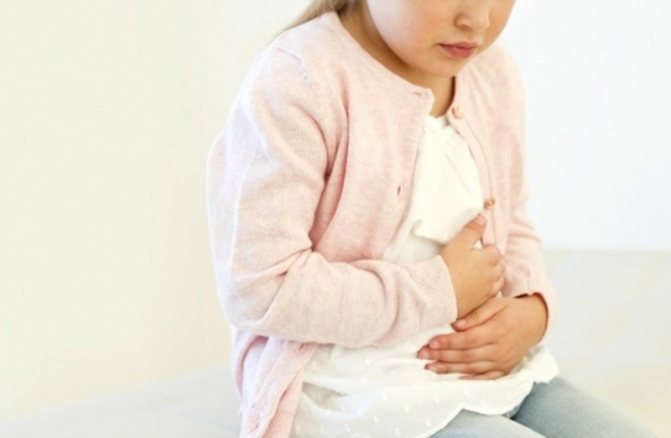
However, there is a second option for solving this problem - for some time you can give a child recovering from an intestinal infection special enzymes. However, most pediatricians still believe that a prolonged diet is preferable to the use of pharmaceutical enzymes.
Alas, the human body is not able to develop long-term and lasting immunity to the vast majority of intestinal infections. In other words, a child can suffer from intestinal infections as often as ARVI. That is why it is very important to know how to behave correctly while your child is suffering from an intestinal infection.
Let's remember the basic rules:
- 1 Actively feed with special solutions that restore the water-salt balance;
- 2 Feed a light diet excluding animal products;
- 3 Follow your diet for about one week after recovery.
These simple but very effective measures will help your child survive an intestinal infection in just 4-5 days, allowing his immune system to quickly build a powerful defense. And at the same time he will not need any additional medicinal assistance. You will be surprised, but over 90% of cases of all intestinal infections are treated this way - without drugs, but with plenty of fluids and a special diet!






